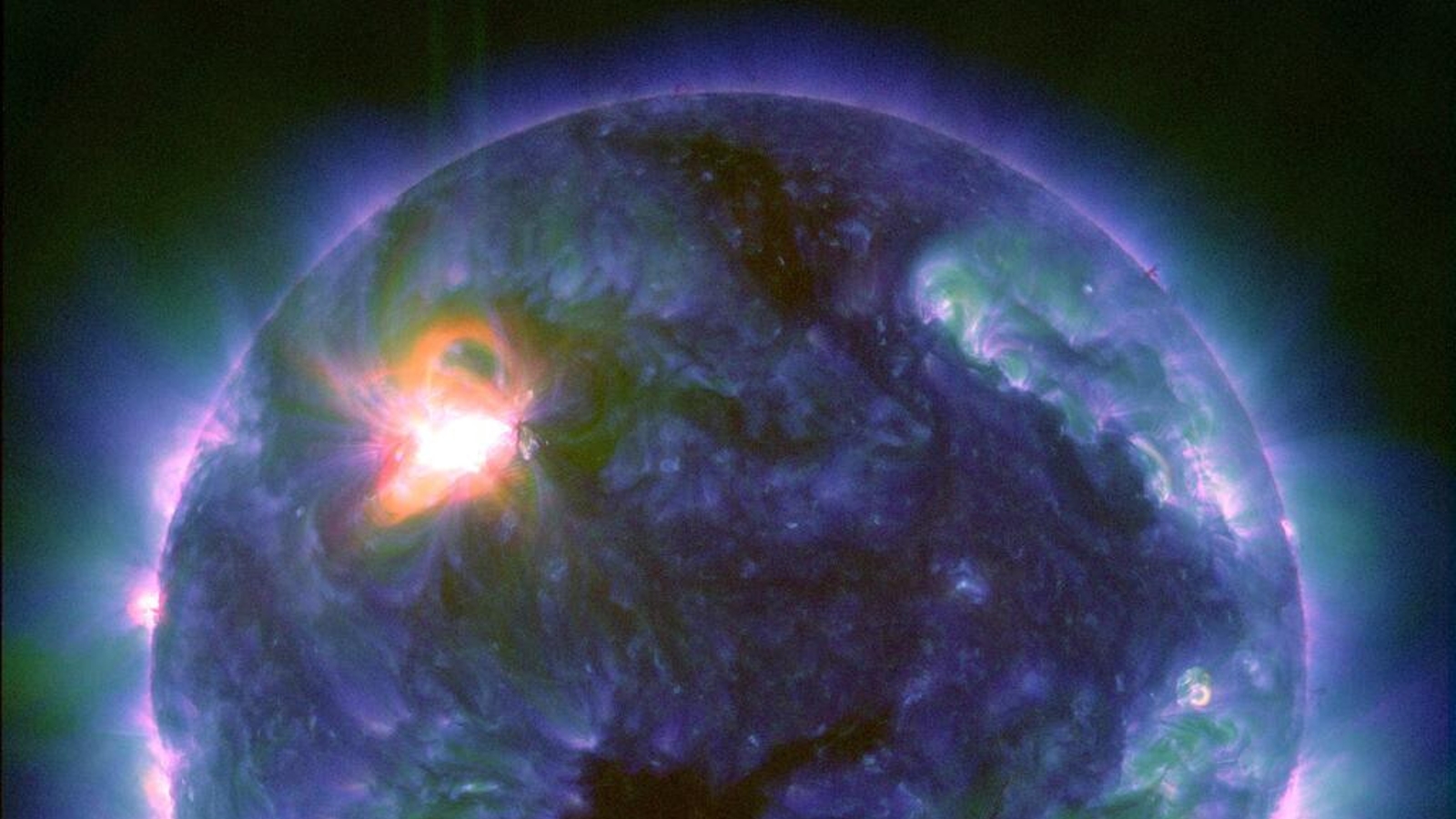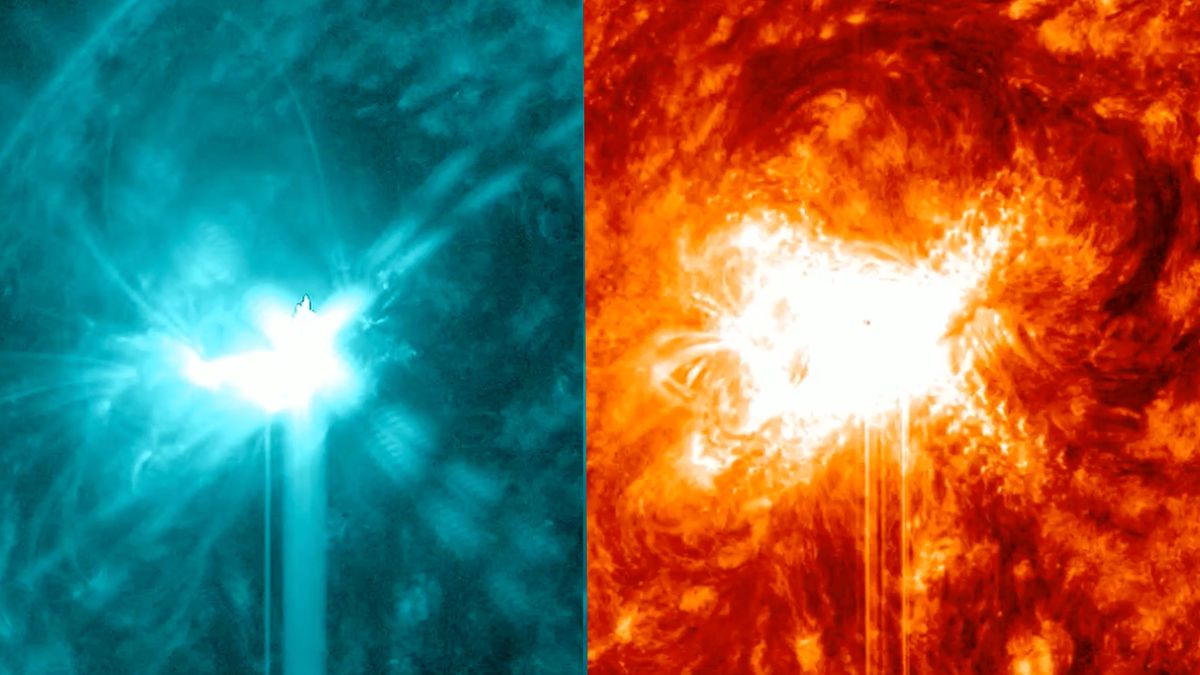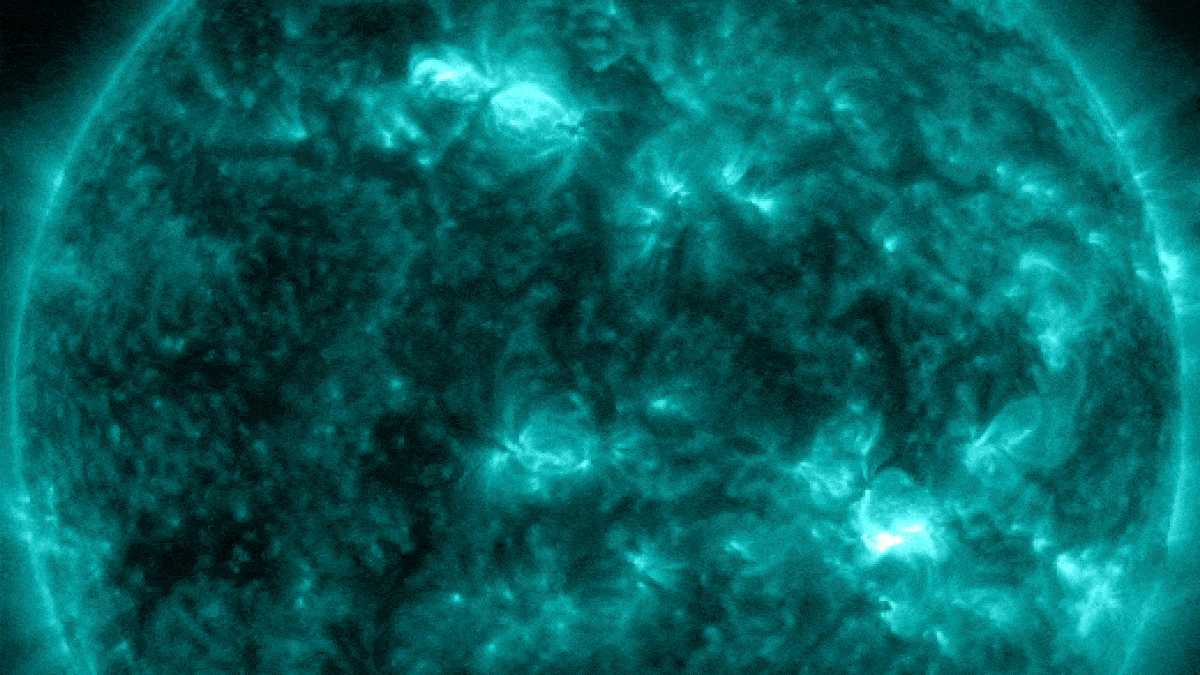3rd X-class solar flare in 24 hours is the most powerful for 6 years — and it may not be the last
A hyperactive sunspot recently unleashed its third X-class flare in under 24 hours. The X6 flare is the most powerful since 2017 and could be followed by equally massive explosions.

They say all good things come in threes, but what about supercharged solar flares?
A massive, hyperactive sunspot has just unleashed its third X-class solar flare — the most powerful type of solar explosion — in less than 24 hours. The latest flare, which is the largest of the current solar cycle, is the sun's most intense outburst since 2017. And an even more powerful explosion could be on the way.
This flurry of sun-shaking eruptions is a stark reminder that we are on the verge of entering the explosive peak of the solar cycle — the solar maximum — and are likely to see even more intense and potentially destructive solar storms over the next few years.
On Feb. 21, sunspot AR3590 — a massive dark patch several times wider than Earth — spat out two X-class flares in the space of seven hours, Live Science's sister site Space.com reported. These explosions had magnitudes of X1.8 and X1.7 respectively.
But on Feb. 22, the same sunspot unleashed an X6.3 flare around 23 hours after the first, according to the National Oceanic and Atmospheric Administration. This was around five times more powerful than the previous two flares, according to NASA.
Not only is this the most powerful explosion of the current solar cycle, which began in 2019, but it is also the most powerful since Sept. 10, 2017, when an X11.8 magnitude flare rocked the sun.
Related: 10 solar storms that blew us away in 2023
Get the world’s most fascinating discoveries delivered straight to your inbox.

None of the flares launched coronal mass ejections (CMEs) — clouds of magnetized plasma that can slam into Earth's magnetic field, or magnetosphere, and trigger disturbances known as geomagnetic storms that can lead to vibrant aurora displays.
However, all three spat waves of radiation toward us, causing temporary radio blackouts as they slammed into our planet's protective shield. There were rumors that the first two flares were also responsible for causing cell coverage outages from providers AT&T, Verizon and T-Mobile. But this was likely not the case.
But we are not yet in the clear. AR3590 has a particularly unstable magnetic field that "harbors energy for more X-class explosions," Spaceweather.com reported. The sunspot only recently emerged on the sun's near-side to Earth and will be pointing at us for the next week, so if it does have any more violent outbursts it could hurl a substantial CME right at us.
If this were to happen, it could not only trigger auroras but also disrupt communications, interfere with infrastructure on the planet's surface and knock satellites out of the sky.
Just the beginning

Solar flares become more frequent and powerful during and in the lead-up to the solar maximum because the sun's magnetic field lines get tangled up and frequently snap, triggering explosive eruptions.
Last year, there were 13 X-class flares, which was up from seven in 2022 and two in 2021, according to SpaceWeatherLive.com. Now, after AR3590's triple flares, we have already had five X-class flares in 2024 and we haven't even hit March.
The intensity of these flares is also on the rise. Within the last three months, the record for the current solar cycle's largest flare has now been broken three times following an X2.8 flare on Dec. 14 and an X5 flare on Dec. 31.
Scientists originally predicted that the solar maximum would arrive sometime in 2025 and be weaker compared to past solar activity peaks. However, after numerous warning signs that this wasn't the case, researchers updated their forecasts late last year.
Experts now believe that the solar maximum will officially arrive in the first half of this year and be as active as past maximums. It may have already begun, but we won't know for sure until we near the end of the solar cycle.
If the solar maximum progresses as expected, there could be many more powerful X-class flares over the next few years. If they launch CMEs toward Earth, then there could be some serious consequences.

Harry is a U.K.-based senior staff writer at Live Science. He studied marine biology at the University of Exeter before training to become a journalist. He covers a wide range of topics including space exploration, planetary science, space weather, climate change, animal behavior and paleontology. His recent work on the solar maximum won "best space submission" at the 2024 Aerospace Media Awards and was shortlisted in the "top scoop" category at the NCTJ Awards for Excellence in 2023. He also writes Live Science's weekly Earth from space series.


